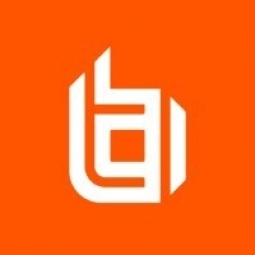Customer Company Size
Large Corporate
Region
- America
Country
- United States
Product
- Bomgar Remote Support
Tech Stack
- Remote Support Technology
- Network Infrastructure
Implementation Scale
- Enterprise-wide Deployment
Impact Metrics
- Productivity Improvements
- Customer Satisfaction
Technology Category
- Application Infrastructure & Middleware - API Integration & Management
Applicable Industries
- Food & Beverage
Use Cases
- Remote Asset Management
- Remote Collaboration
Services
- System Integration
About The Customer
Eat’n Park Hospitality Group is a food service company founded in 1949. It began as a drive-in restaurant in Pittsburgh’s South Hills, where customers could park their cars and be served by waitresses on roller skates. Today, it has evolved into an indoor-dining family restaurant franchise with 75 locations, some of which are open 24 hours a day. Over the years, the company expanded into other food service ventures, offering quality dining services to colleges, universities, corporations, senior living communities, and hospitals. Overall, Eat’n Park Hospitality Group operates in 150 locations with approximately 10,000 employees.
The Challenge
Eat’n Park Hospitality Group, a franchise with 75 locations and operating in 150 locations with approximately 10,000 employees, was seeking a solution to improve IT support for users and address growing concerns about data security in the payment card industry (PCI). The company wanted to centralize support for the company’s users, provide high level security with multiple authentication mechanisms and enable the IT support team to establish connections with and monitor devices 24 hours a day. The company also wanted a solution that would integrate within the company’s data center and network infrastructure.
The Solution
After careful consideration of security and functional requirements and comparisons against other solutions, Mike Castillo, director of network infrastructure and security for Eat’n Park Hospitality Group, discovered Bomgar. Bomgar’s on-premise approach made it possible to integrate the remote support solution within the company’s data center and network infrastructure. Bomgar provided a centralized remote support solution that worked with all of the systems in Eat’n Park’s environment. All of the company's field systems could be accessed using Bomgar, and the solution offered a portal where users could go for support. Bomgar’s jump technology also allowed the company’s 16 technicians to proactively support any of its fixed environments, such as a point of sale (POS) system.
Operational Impact
Quantitative Benefit

Case Study missing?
Start adding your own!
Register with your work email and create a new case study profile for your business.
Related Case Studies.

Case Study
The Kellogg Company
Kellogg keeps a close eye on its trade spend, analyzing large volumes of data and running complex simulations to predict which promotional activities will be the most effective. Kellogg needed to decrease the trade spend but its traditional relational database on premises could not keep up with the pace of demand.

Case Study
HEINEKEN Uses the Cloud to Reach 10.5 Million Consumers
For 2012 campaign, the Bond promotion, it planned to launch the campaign at the same time everywhere on the planet. That created unprecedented challenges for HEINEKEN—nowhere more so than in its technology operation. The primary digital content for the campaign was a 100-megabyte movie that had to play flawlessly for millions of viewers worldwide. After all, Bond never fails. No one was going to tolerate a technology failure that might bruise his brand.Previously, HEINEKEN had supported digital media at its outsourced datacenter. But that datacenter lacked the computing resources HEINEKEN needed, and building them—especially to support peak traffic that would total millions of simultaneous hits—would have been both time-consuming and expensive. Nor would it have provided the geographic reach that HEINEKEN needed to minimize latency worldwide.

Case Study
Energy Management System at Sugar Industry
The company wanted to use the information from the system to claim under the renewable energy certificate scheme. The benefit to the company under the renewable energy certificates is Rs 75 million a year. To enable the above, an end-to-end solution for load monitoring, consumption monitoring, online data monitoring, automatic meter data acquisition which can be exported to SAP and other applications is required.

Case Study
Coca Cola Swaziland Conco Case Study
Coco Cola Swaziland, South Africa would like to find a solution that would enable the following results: - Reduce energy consumption by 20% in one year. - Formulate a series of strategic initiatives that would enlist the commitment of corporate management and create employee awareness while helping meet departmental targets and investing in tools that assist with energy management. - Formulate a series of tactical initiatives that would optimize energy usage on the shop floor. These would include charging forklifts and running cold rooms only during off-peak periods, running the dust extractors only during working hours and basing lights and air-conditioning on someone’s presence. - Increase visibility into the factory and other processes. - Enable limited, non-intrusive control functions for certain processes.

Case Study
Temperature Monitoring for Restaurant Food Storage
When it came to implementing a solution, Mr. Nesbitt had an idea of what functionality that he wanted. Although not mandated by Health Canada, Mr. Nesbitt wanted to ensure quality control issues met the highest possible standards as part of his commitment to top-of-class food services. This wish list included an easy-to use temperature-monitoring system that could provide a visible display of the temperatures of all of his refrigerators and freezers, including historical information so that he could review the performance of his equipment. It also had to provide alert notification (but email alerts and SMS text message alerts) to alert key staff in the event that a cooling system was exceeding pre-set warning limits.

Case Study
Coca-Cola Refreshments, U.S.
Coca-Cola Refreshments owns and manages Coca-Cola branded refrigerators in retail establishments. Legacy systems were used to locate equipment information by logging onto multiple servers which took up to 8 hours to update information on 30-40 units. The company had no overall visibility into equipment status or maintenance history.







